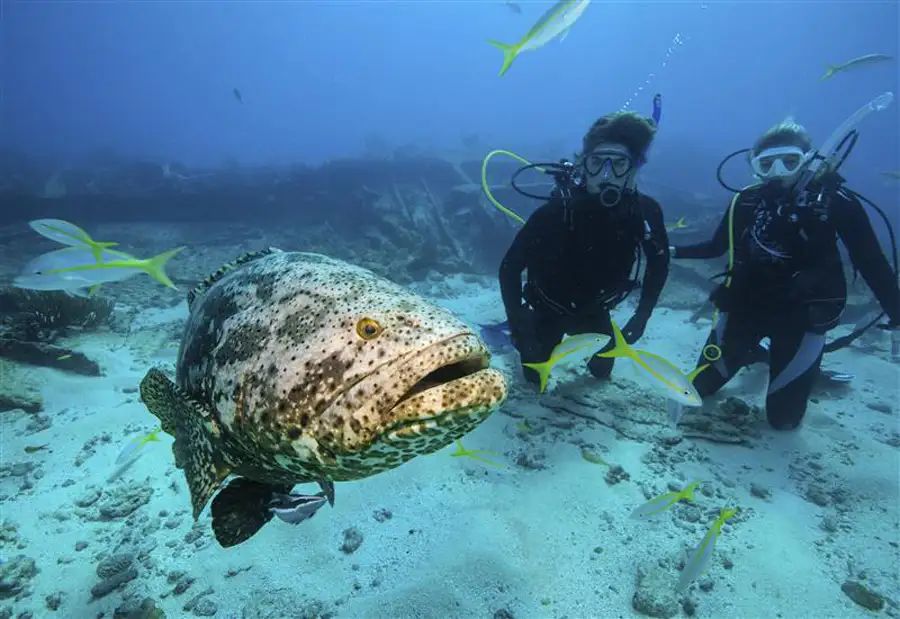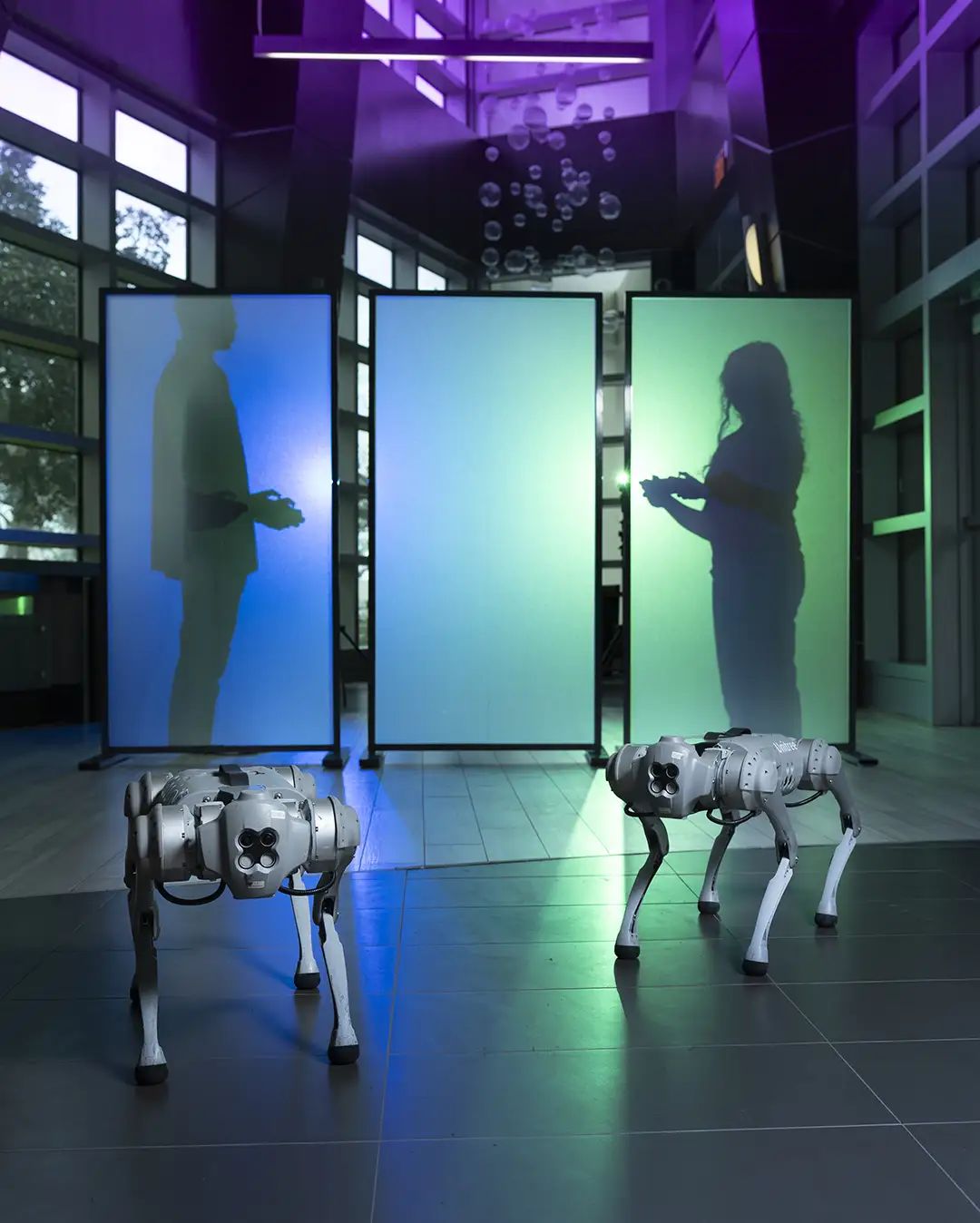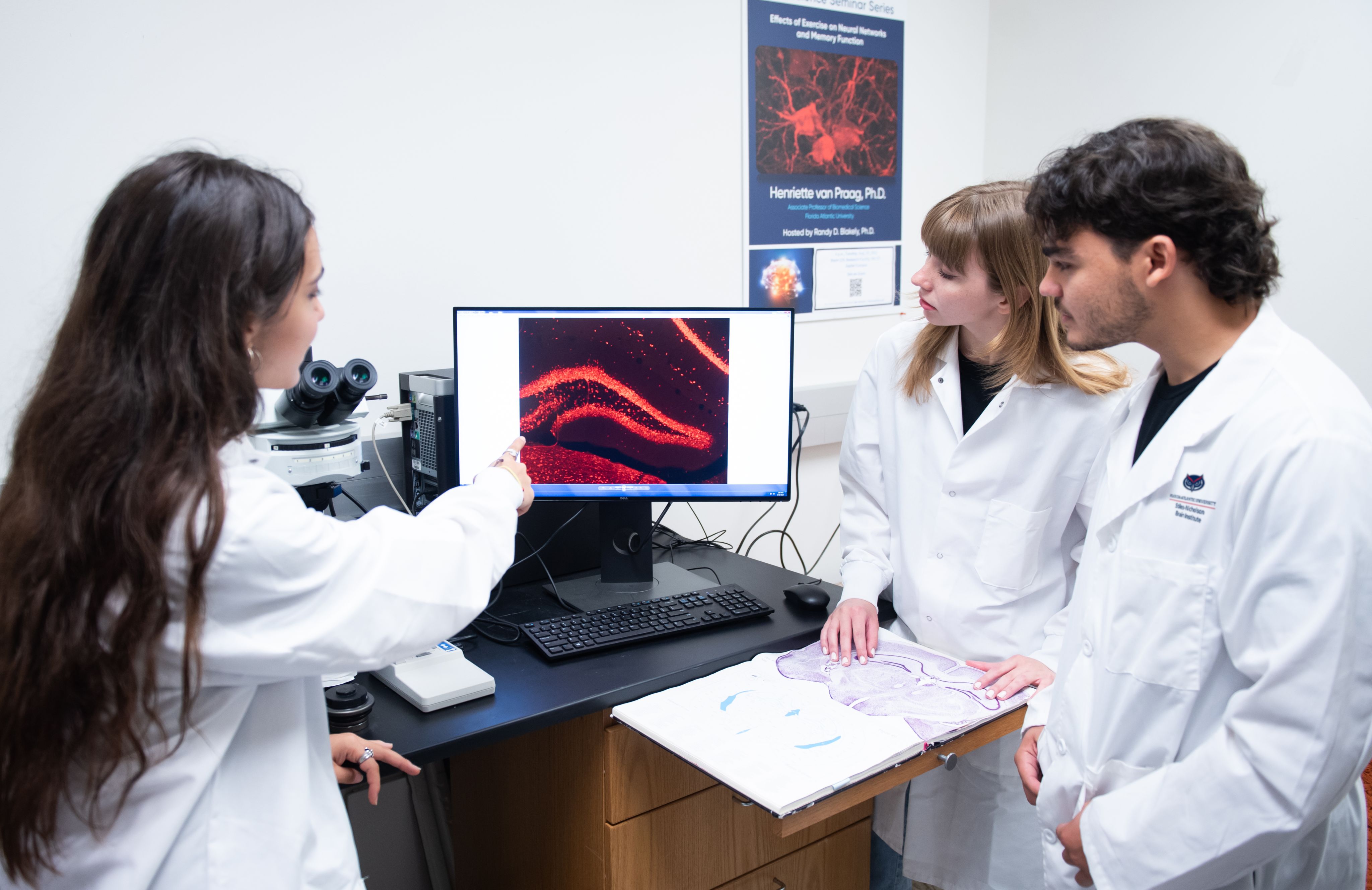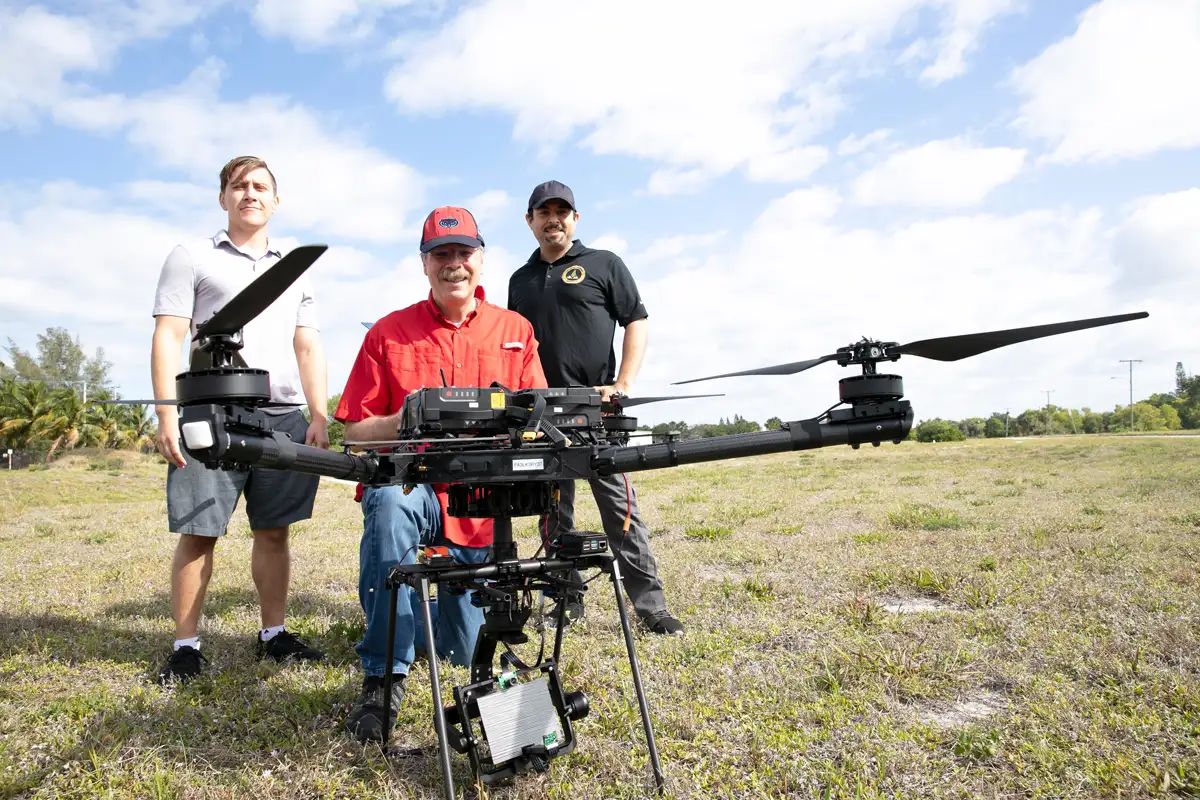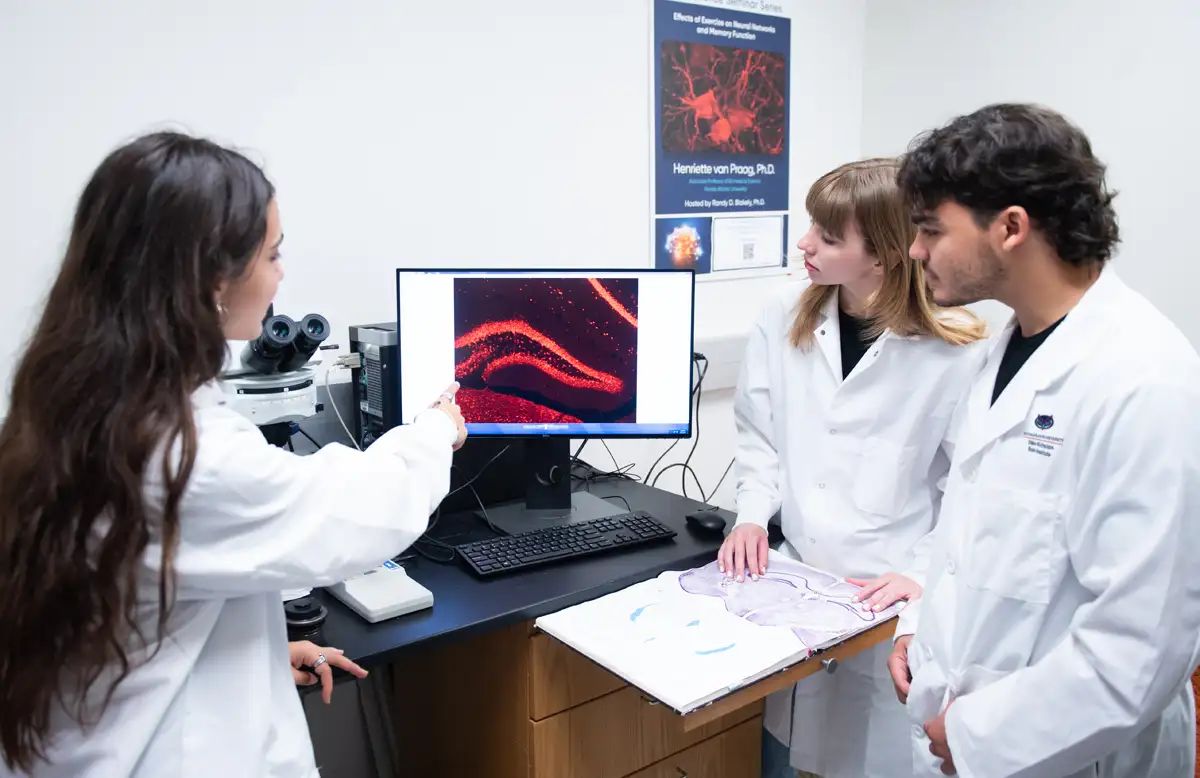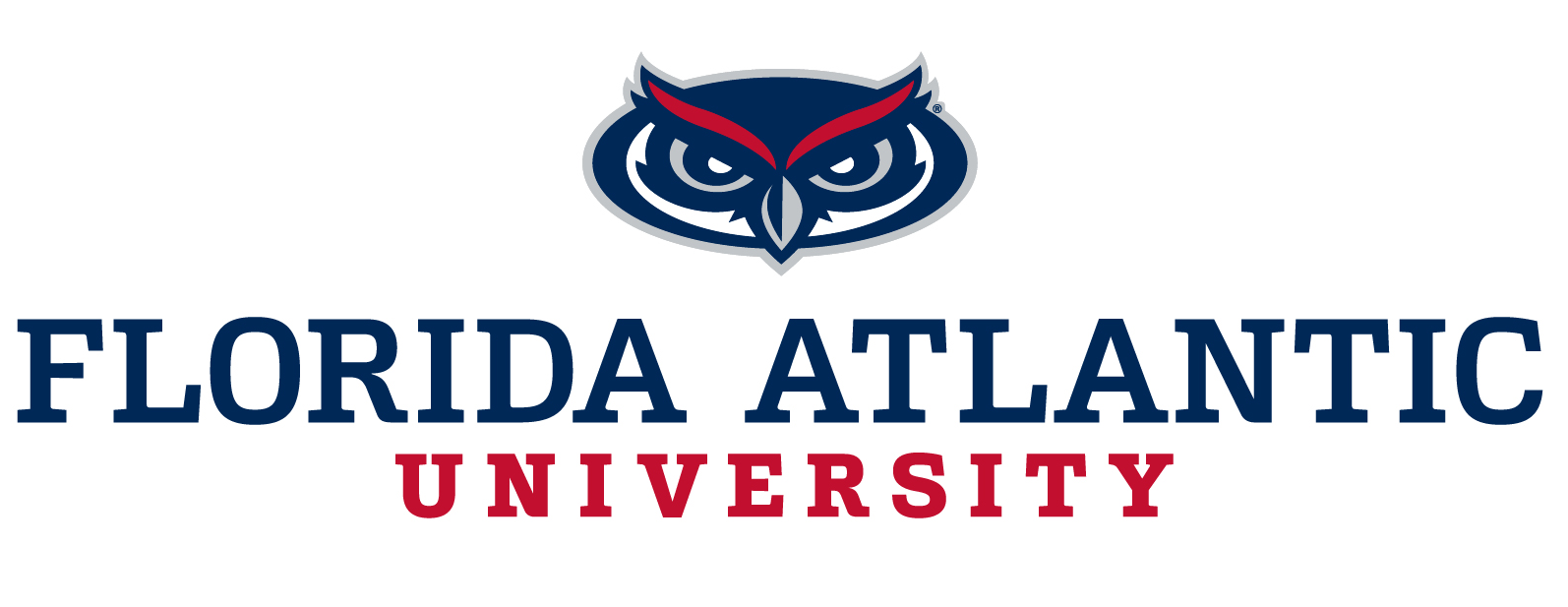5 Steps to Becoming a Research Powerhouse
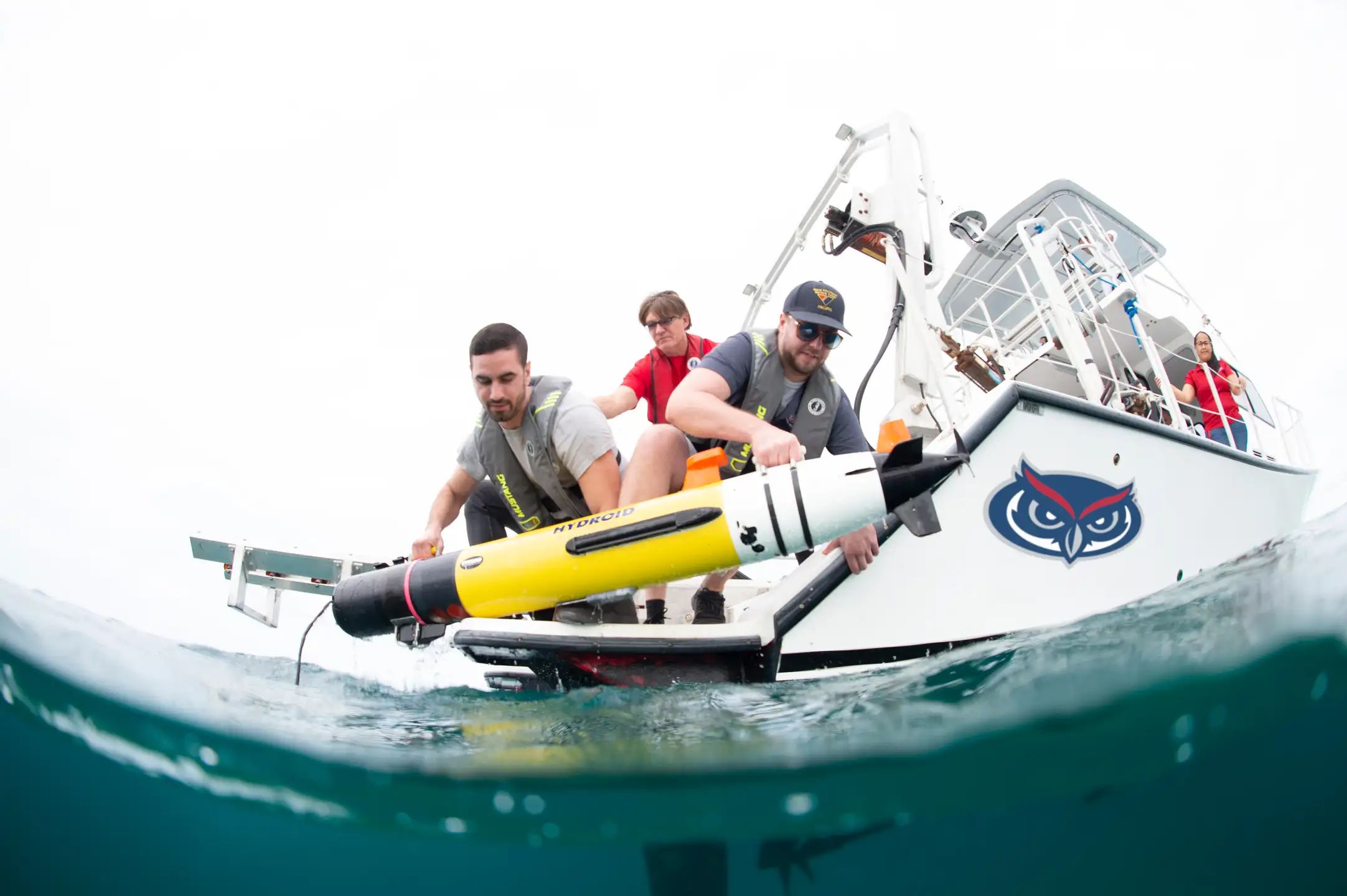
It’s a fish tale yet one that’s true. The Goliath grouper, which can weigh as much as 700 pounds, generates a distinctive “boom” sound whenever novel objects encroach on its environment. Why is that important? Researchers at Florida Atlantic University are studying such habits on behalf of the U.S. Department of Defense to improve the Navy’s ability to detect foreign enemies and other ocean-borne threats.
Florida Atlantic scientists also are collaborating with the Defense Department on developing the first drone-based, mobile network to thwart hostile military advances by, for example, providing one-time crypto-keys to exchange information that spies and enemies can’t intercept. And they are developing and enhancing body-armor materials and conducting other research to better protect the safety and health of the women and men who serve in the U.S. military.
These innovative ways of shoring up the nation’s defenses are just a few of the many scientific advances occurring at Florida Atlantic. This year, the Carnegie Classification of Institutions of Higher Education categorized the university as “R1,” or one of the nation’s leading research institutions. Florida Atlantic’s research portfolio has doubled from $40 million to $109 million over the past decade, and it is increasingly on the forefront of examining and helping resolve some of the most important challenges of our time.
How has this transformation occurred? What steps has Florida Atlantic taken to get here, and what has it learned along the way?
The university has focused on the following fundamental strategies.
Divers with Goliath grouper
Divers with Goliath grouper
Divers with Goliath grouper
Divers with Goliath grouper
It’s a fish tale yet one that’s true. The Goliath grouper, which can weigh as much as 700 pounds, generates a distinctive “boom” sound whenever novel objects encroach on its environment. Why is that important? Researchers at Florida Atlantic University are studying such habits on behalf of the U.S. Department of Defense to improve the Navy’s ability to detect foreign enemies and other ocean-borne threats.
Florida Atlantic scientists also are collaborating with the Defense Department on developing the first drone-based, mobile network to thwart hostile military advances by, for example, providing one-time crypto-keys to exchange information that spies and enemies can’t intercept. And they are developing and enhancing body-armor materials and conducting other research to better protect the safety and health of the women and men who serve in the U.S. military.
These innovative ways of shoring up the nation’s defenses are just a few of the many scientific advances occurring at Florida Atlantic. This year, the Carnegie Classification of Institutions of Higher Education categorized the university as “R1,” or one of the nation’s leading research institutions. Florida Atlantic’s research portfolio has doubled from $40 million to $109 million over the past decade, and it is increasingly on the forefront of examining and helping resolve some of the most important challenges of our time.
How has this transformation occurred? What steps has Florida Atlantic taken to get here, and what has it learned along the way?
The university has focused on the following fundamental strategies.
#1. Conducting research that meets society’s most urgent needs.
Florida Atlantic identified four major areas in which to focus its resources and efforts.
Ocean and environmental science and engineering. Scientists at the university’s Harbor Branch Oceanographic Institute are pursuing strategies to help protect and save the world’s oceans by studying marine ecosystems and issues such as climate mitigation, pollution, coastal development, and overfishing. They are also finding new ways to harness some of the sea’s vast resources to help produce vital medicines, food supplies, and renewable energy.
To cite a few of many examples, researchers have harvested natural chemicals derived from deep sea corals and sponges to develop potential treatments for antibiotic resistant infections and aggressive cancers. They are also exploring how to significantly increase the production of the primary source of protein for nearly 1 billion people: high-quality seafood, the global demand for which is expected to double over the next 40 years. In addition, the university’s Southeast National Marine Renewable Energy Center has begun to convert the natural force of the Gulf Stream into an alternative sustainable energy source to power some of Florida’s most populated coastal communities.
Health and healthy aging. A crucial ongoing national need is to redesign the healthcare infrastructure so it better supports patients’ everyday health and wellness, and provides more specialized services for complex illnesses. Florida Atlantic scientists have taken on that challenge, with a particular focus on the country’s growing aging population, which has its own distinct needs when it comes to combatting infectious diseases and managing other medical issues.
Neuroscience. More than 100 researchers at Florida Atlantic's Stiles-Nicholson Brain Institute are exploring the brain’s development, function, and plasticity — and, in particular, what drives disorders like autism, schizophrenia, depression, and Alzheimer’s disease. And the Human Health and Dementia Research Focus Group is developing new therapies for treating dementia and other cognitive and memory deficits.
Smart systems. The Institute for Sensing and Embedded Network Systems Engineering, or I-SENSE, coordinates university activities that discover ways to apply sensing and smart systems. For example, researchers have been developing a new generation of networked robots, connecting them through high-speed millimeter wave links, and creating learning algorithms and protocols for their operation.

#1. Conducting research that meets society’s most urgent needs.
Florida Atlantic identified four major areas in which to focus its resources and efforts.
Ocean and environmental science and engineering. Scientists at the university’s Harbor Branch Oceanographic Institute are pursuing strategies to help protect and save the world’s oceans by studying marine ecosystems and issues such as climate mitigation, pollution, coastal development, and overfishing. They are also finding new ways to harness some of the sea’s vast resources to help produce vital medicines, food supplies, and renewable energy.
To cite a few of many examples, researchers have harvested natural chemicals derived from deep sea corals and sponges to develop potential treatments for antibiotic resistant infections and aggressive cancers. They are also exploring how to significantly increase the production of the primary source of protein for nearly 1 billion people: high-quality seafood, the global demand for which is expected to double over the next 40 years. In addition, the university’s Southeast National Marine Renewable Energy Center has begun to convert the natural force of the Gulf Stream into an alternative sustainable energy source to power some of Florida’s most populated coastal communities.
Health and healthy aging. A crucial ongoing national need is to redesign the healthcare infrastructure so it better supports patients’ everyday health and wellness, and provides more specialized services for complex illnesses. Florida Atlantic scientists have taken on that challenge, with a particular focus on the country’s growing aging population, which has its own distinct needs when it comes to combatting infectious diseases and managing other medical issues.
Neuroscience. More than 100 researchers at Florida Atlantic's Stiles-Nicholson Brain Institute are exploring the brain’s development, function, and plasticity — and, in particular, what drives disorders like autism, schizophrenia, depression, and Alzheimer’s disease. And the Human Health and Dementia Research Focus Group is developing new therapies for treating dementia and other cognitive and memory deficits.
Smart systems. The Institute for Sensing and Embedded Network Systems Engineering, or I-SENSE, coordinates university activities that discover ways to apply sensing and smart systems. For example, researchers have been developing a new generation of networked robots, connecting them through high-speed millimeter wave links, and creating learning algorithms and protocols for their operation.
“We are not just building a university — we are shaping a future where discovery knows no boundaries, collaboration drives innovation, and education transforms lives.”
“We are not just building a university — we are shaping a future where discovery knows no boundaries, collaboration drives innovation, and education transforms lives.”
#2. Collaborating with visionary partners.
Throughout the past several decades, the university has worked in tandem with a variety of local, national and international organizations to broaden and advance its research efforts. To name just a few, Florida Atlantic cancer experts have allied with Memorial Healthcare System and the American Cancer Society to form what the Florida Department of Health has designated a “Cancer Center of Excellence” for its exceptional patient-centered care. The university has also teamed up with Nikon, an international scientific instrumentation company, to study various aspects of neuroscience, including new ways to treat brain disorders. And researchers from the College of Engineering and Computer Science have been collaborating with the Marcus Neuroscience Institute and the Boca Raton Regional Hospital to create the next generation of AI to help rectify administrative inefficiencies and diagnostic errors, cut costs, address the shortage of skilled professionals in the medical field, and provide data-driven and increasingly personalized and effective care.
#3. Emphasizing interdisciplinary cooperation.
At Florida Atlantic, students and faculty members work across many different departments to drive innovation. Through specially established multidisciplinary research institutes and centers — such as the Institute for Human Health and Disease Intervention and its Genetics Research Focus Group — faculty members, students, and the public share expertise to accelerate breakthrough advances.
The Stiles-Nicholson Brain Institute, for example, has developed and oversees the interdisciplinary Neuroscience Graduate Program that unites scientists, educators, and students across multiple colleges and departments. Neuroscience faculty members pursue cutting-edge research with colleagues in molecular and cell biology, biochemistry and pharmacology, engineering, and other disciplines.
#4. Building a top-of-the-line scientific infrastructure.
Florida Atlantic has made significant infrastructure investments in imaging and analytical instrumentation.
“That investment facilitates increased production of current faculty and hiring of additional, research-focused faculty,” notes Gregg Fields, Ph.D., vice president for research at the university. “Contrary to some beliefs, you can change the culture within an institution by creating support mechanisms — such as hiring more grants management staff and offering workshops for faculty relevant to grant and research planning — that indicate ‘We are all in this together.’”
The university’s external partner organizations have also made significant contributions of equipment and learning tools to Florida Atlantic’s research infrastructure. Nikon is lending its state-of-the-art imaging systems and technical expertise to the university’s research efforts in brain health as well as student work in classes.
Similarly, Zeiss, a leading international technology company specializing in optics and optoelectronics, has provided access to the latest microscopy and image analysis equipment to help scientists accelerate their research. What’s more, it has enabled undergraduate students to train on ultra-high-tech scientific imaging instruments — an opportunity most young scientists don’t gain until graduate school or later.
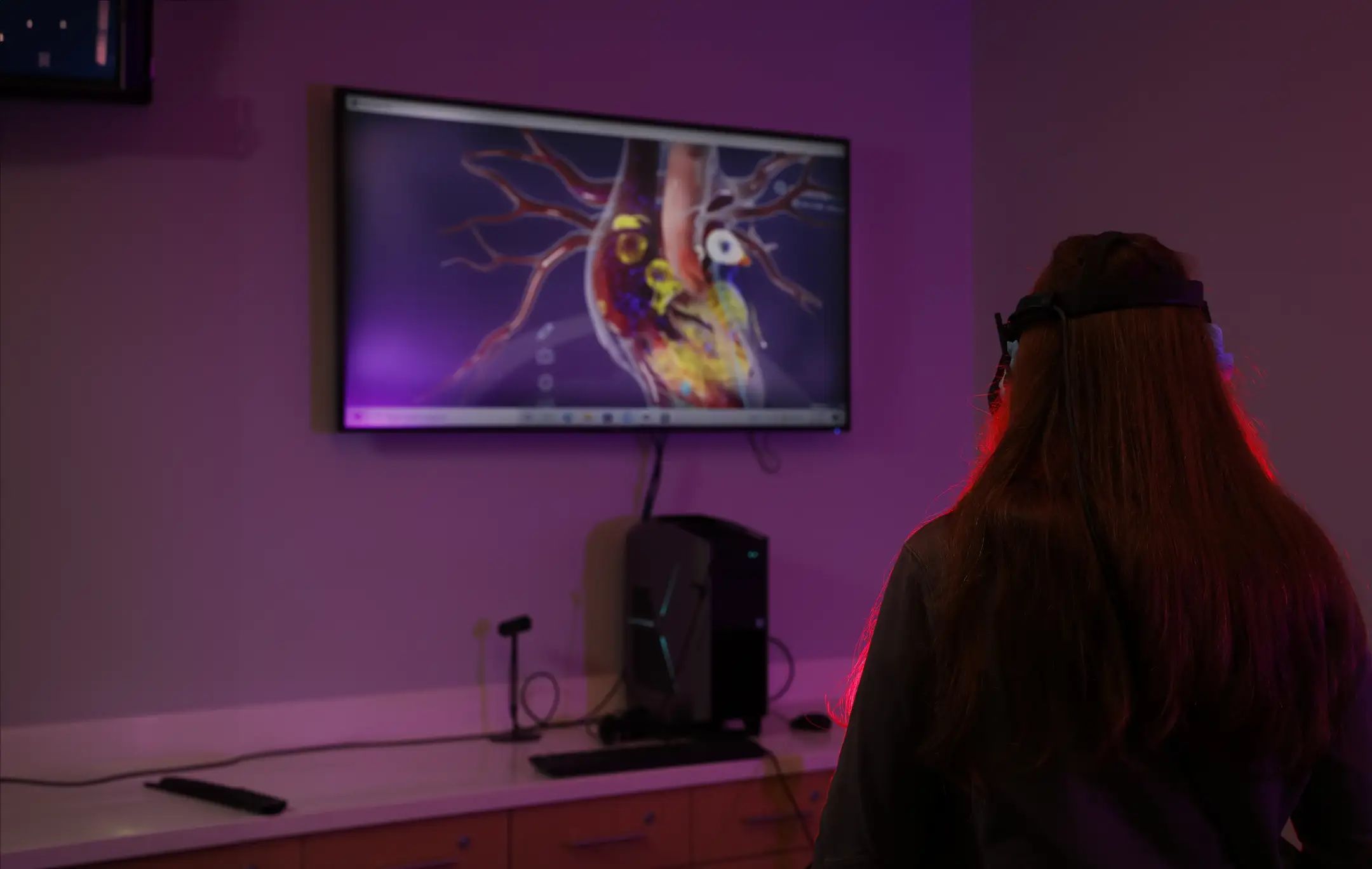
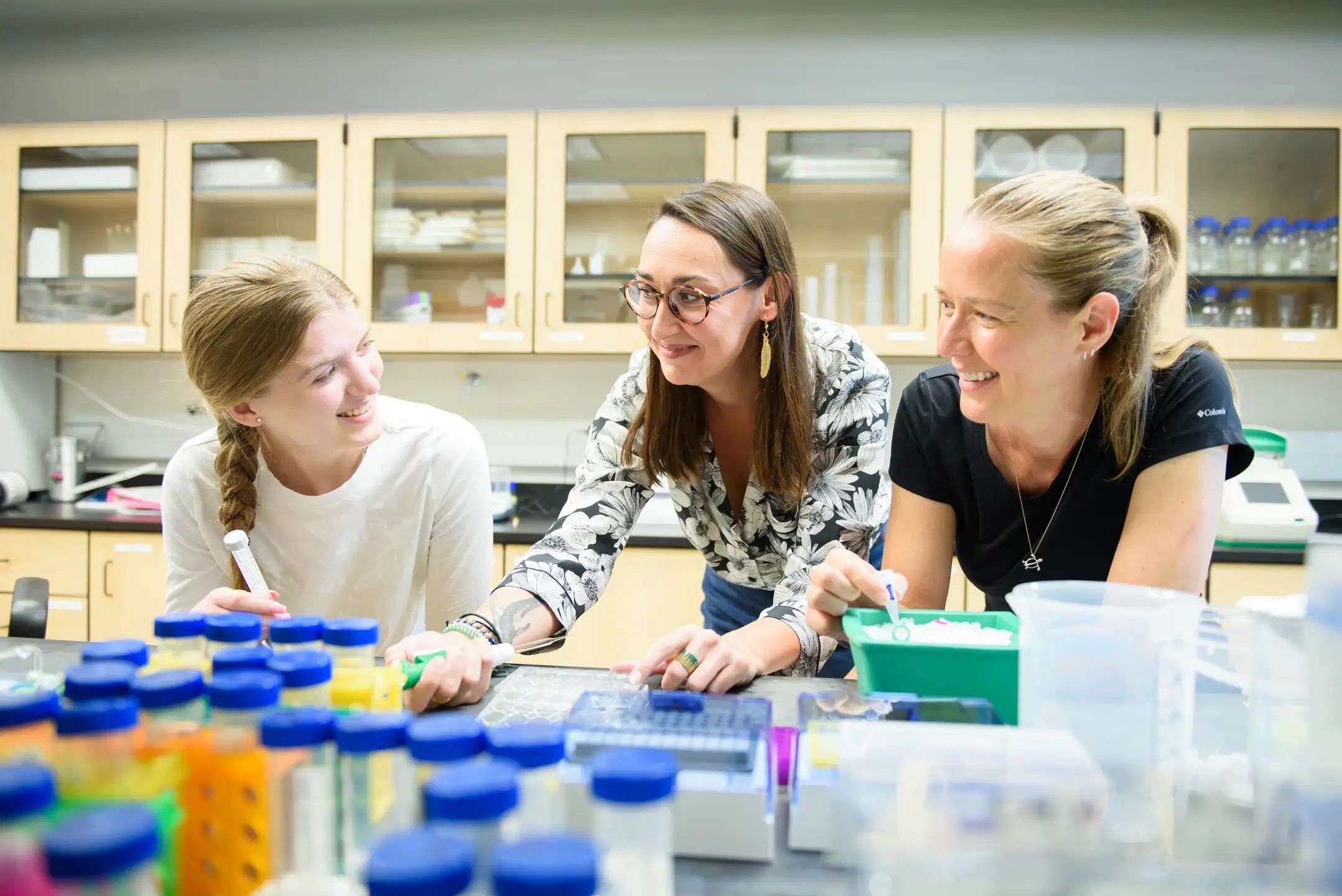
#5. Enhancing undergraduate research.
Indeed, Florida Atlantic’s partnerships with leading research organizations like Zeiss, the Herbert Wertheim UF Scripps Institute, and the Max Planck Florida Institute for Neuroscience have helped it to offer students unparalleled and transformational research experiences. Students come from all socioeconomic groups to the university, and it is, in fact, one of only 21 R1 institutions in the nation to also earn the Carnegie Opportunity College and University designation, which is based on access and post-graduation earnings. Through their coursework, students from all backgrounds can develop and hone their research skills and participate in impactful scientific advances.
And they are being recognized for it. This year, two Florida Atlantic students received the most prestigious award of its type: they were selected from a pool of more than 1,300 undergraduate students as Goldwater Scholars. The Goldwater Scholarship program is designed to foster and encourage outstanding students to pursue research careers in the natural sciences, engineering, and mathematics. This is the fourth consecutive year that multiple Florida Atlantic students have been so honored.
Reflecting on these five steps and the university’s research progress, Fields says, “The road to R1, while at times not as straight as we would have liked, was an important learning tool for research growth in general. Like many institutions striving for that status, Florida Atlantic had certain areas of expertise based on an established history of research. We found that you need to continue to focus on what you do best and continue to invest in infrastructure in these areas.”
And he sums up the university’s research ethos: “As Florida Atlantic moves forward, we will continue to grow our unique areas of research to create centers of excellence that distinguish us from other institutions both nationally and internationally. We are not just building a university — we are shaping a future where discovery knows no boundaries, collaboration drives innovation, and education transforms lives.”
This content is paid for and provided by Florida Atlantic University and developed by Inside Higher Ed's sponsored content team. The editorial staff of Inside Higher Ed had no role in its creation.


